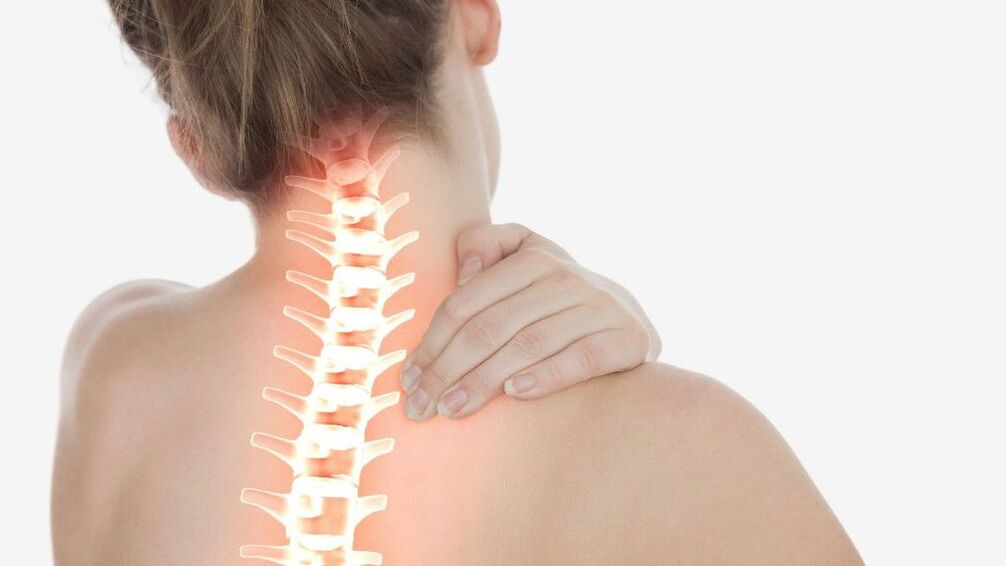Cervical spine osteochondrosis is a degenerative and dystrophic disease that affects the intervertebral discs of the neck.This pathology is the most common pathology of the spine.

Symptoms of the disease
As the disease advances, the characteristic symptoms appear.They include the following demonstrations:
- Weakness
- Dizziness
- Headaches
- Noise in the ears
- Changing the function of the vision organ (decreased gravity, trembling flies in front of the eyes)
- Increased hand sensitivity
- Dormancy
- So a person can usually stop moving his hand
- Feeling of rigidity in the upper limb joints
- Crispy neck
- A feeling of stiffness and pressure on the chest.
The causes of the disease
The main causal factors of cervical spine osteochondrosis are as follows:
- Small neck mobility, which leads to the fact that the intervertebral disc loses liquid, also leads to a loss of cartilage elasticity
- Overloaded heredity, which determines the reserve of the intervertebral disc force
- Microtraumatization of the cervical spine with sharp curves, tilt of the head, etc.
- Metabolic disorders that negatively affect the condition of cartilage on the intervertebral disc.
Diagnosis
The diagnostic search for cervical spine osteochondrosis includes the following studies:
- X -Ray
- Computed tomography
- Nuclear magnetic resonance imaging
- Electromyography.
Each of the above studies carries a certain diagnostic information.The first three allow you to identify changes directly in the spine, characteristic of osteochondrosis.The latest study allows to diagnose osteochondrosis complications, which consists of damage to nerve trunks.
A -X ray exam is performed on various planes, and views are also made to get a more accurate detail of characteristic changes.This study reveals Calcina in the column ligament apparatus, a change in the height of the intervertebral discs, the deformation of the cervical region, etc.
Computed tomography and nuclear magnetic resonance imaging allow you to obtain the most reliable information, so it is recommended to use them in cases of complex diagnosis.
Electromyography Studies Conductivity in nervous fiber, which often with cervical spine osteochondrosis is reduced.This is due to the fact that, with a decrease in the height of the intervertebral discs, conditions are created for compression of nerve roots.Therefore, clinical symptoms such as greater sensitivity, paresis and paralysis appear.
Complications
The absence of timely treatment of cervical spine osteochondrosis can lead to the development of the following complications:
- Paralysis and upper limb paresis on one or two sides
- Ischemic blow of the brain.
Disease treatment
The objectives that the treatment of osteochondrosis pursues are as follows:
- Reducing the severity of pain syndrome
- Prevention of the progression of pathological changes.
The following methods are used to implement these goals:
- Manual therapy is performed
- Acupuncture
- Medical Physical Education
- Gymnastics
- Swimming.
The goal is shown in parallel:
- Condroprotectors, which increase cartilage resistance and allow it to recover
- Non -steroid anti -inflammatory drugs that reduce pain severity.
Exclusive treatment methods
- Applied kinesiology
This is a method of diagnosis and treatment of spinal diseases, joints and nervous system based on muscle test.The doctor with the help of hands studies the condition of tissues and organs.
- HEELD TREATMENT
Along with a leech bite, about 100 biologically active components reach human blood.This helps to clean the blood vessels, eliminates blood clots and interferes with their formation.
- Reflexology
Acupuncture helps cure osteochondrosis, radiculitis and other spinal diseases and joints.The procedures relieve pain, heal the body and strengthen immunity.
Group of risk
In the risk group, the following categories of people should include:
- With overloaded heredity
- Movers
- Having pathological processes of the background.
Prevention
Preventive measures to prevent spine osteochondrosis are as follows:
- Correct posture during the session
- Alternation of cargo and rest
- Exclusion of weighting weights (in this case, it is better to give preference to a backpack)
- Regular underlying medical examinations for a neurologist and orthopedist for early detection of cervical spine osteochondrosis.
Diet and lifestyle
In case of osteochondrosis, it is necessary to make certain lifestyle adjustments.They are as follows:
- Treatment of the pathological process of the background, which led to osteochondrosis if detected
- Exception of weighting
- Nutrition Normalization - Rejection of fat, fried, acute, salty, increases the fiber content of plants and products with chondroitin (jam, jam) in the diet
- A sufficient pace of physical activity.



















